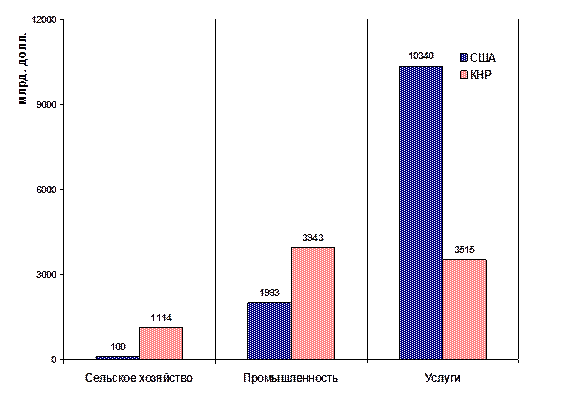* * * Madam Chairwoman,
Population issues are one of the most important/crucial/аге among
the most important priorities of the government of the Russian Federation, since/because in recent years the demographic situation in our country/has been in a state of crisis/can with reason be called critical/has deteriorated badly. The major elements/factors are: the deterioration in/worsening of/the health of and an unprecedented rise in the mortality of the population, in particular for people of working age, a sharp drop/decline in the number of births, the continuation/ maintenance of a/downward trend/decline/in life expectancy, particularly among men, a rise in/increase in general and in age-specific/ age-related morbidity given/due to/along with greater/an increase in/ forced migration, aging and an absolute decline/reduction in the numbers of the population.
The demographic crisis has been caused by/has resulted from/is caused by a number of factors, including/compounded by/consisting of/ in addition to a global/worldwide/long-term trend towards a decline in the birth rate with/and a trend specific to Russia of a rise in mortality and a reduction in life expectancy. A direct impact/influence on population processes is being exerted by the socio-economic situation in the country/Population processes ("development" can be omitted) are subject to the effects of the country's socio-economic situation./ The socio-economic situation in the country is having a direct impact on the processes of population development.
Russia has already reached the point of depopulation/crossed the line where depopulation begins. A natural decline as the major indicator of demographic problems began emerging/was noted/for the country as a whole from the end of 1990 on/starting at the end of 1990. From 1993-96 a natural decline in the population was noted/ observed/recorded/in 69 regions of the country, while/though/ten years ago such phenomena were observed only in three regions of Russia.
Reproduction of the population in Russia is at such a low level that it does not even provide for/ensure/result in/produce that simple reproduction of the population needed for numerical replacement of the generation of parents by their children. This is borne out/attested
to/shown/proved by the net coefficient of reproduction of the population required for numerical replacement of the parents' generation by their children. (While) in 1989 it was at 0,593, in 1996 it/the figure/was 0.603.
Regarding/concerning/as for mortality factors, Russia's experience backs/confirms/the conclusion as to a general shift in the ranking of mortality causes/factors/from infectious diseases towards non-infectious chronic and acquired diseases, primarily/predominantly/mostly/ cardiovascular diseases and malignant tumors. The largest/greatest/ number of people in Russia are dying from circulatory illnesses. And/it is/It is in fact/precisely/the changes in mortality from cardiovascular diseases which are exerting a decisive impact/impacting decisively on general mortality. In recent years as the result of a strong new upward trend, mortality from accidents, poisoning and trauma among the population of working age, in particular/primarily/men, for the first time has exceeded mortality from cancer and is one of the negative factors/features/of the demographic situation in Russia.
|
|
|
Moreover/at the same time/however, mortality in Russia from infectious diseases is mainly/primarily due to tuberculosis, which in various years has accounted for from 70 to 90% of all deaths from infectious diseases among men and from 40-70% among women.
An important role in the development of this situation is being played by/can be attributed to/the behavioral factor, which in turn depends on policy (designed) to promote a healthy life style.
Several positive changes/developments in 1995-97 have not yet/as of now/resulted/led to/changes in the general trend/have not changed the general trend. In particular, there has been an increase in male mortality, making it one of the highest rates in the world/There has been a particularly striking growth Ч and now one of the highest rates in the world is that of male mortality. Child and maternal mortality continues to remain at a high level/There continued to be a high level of child and maternal mortality.
Back in 1995/Already in 1995/starting in 1995/there were signs of an increase in life expectancy: among men and women it has gradually been rising/there has been a gradual rise among men and women, 59.8 years for men and 72.5 for women.
There has been the beginning of the emergence/We have seen the beginnings of/There has been a start of/encouraging trends through a drop in infant mortality: in 1996 the coefficient for infant mortality was 17.4, and in 1997 - 16.9 cases per 1000 births.
The available/existing data, however, do not allow for an appropriate/proper/accurate determination of the length, intensity,
regional differentiation, structure and consequences of the demographic crisis and the impact on it of external factors.
A vital/critically important/crucial/objective/task here is to obtain/extract/produce/true and reliable information in the field of population. An extremely important source of such information is the census. Here/in this connection/in this context we would like to support/back the idea/notion that without reliable statistical data and indicators it is impossible to formulate/make/draw up proper policy in the field of population.
In formulating Russia's demographic policy the government is attempting/trying to increase/expand the number/range of its partners, and is actively involving in this work (inter alia) social/public organizations and non-governmental organizations.
Thank you.
In addition to some specific demographic terms, which tend to appear frequently these days in texts at conferences, this speech contains a number of tricky syntactic problems. It also provides useful training in writing down numbers.
омментарии:
1) занимают одно из высших мест Ч can easily be reduced to "is one of
the most important priorities" or "is one of the most important things," or
simply, "is of great importance."
2) может быть охарактеризована как кризисна€ Ч "can be termed
critical" is a concise translation, or even, "is critical."
|
|
|
3) ее основными чертами €вл€ютс€ Ч "its major features/factors are" is
a solution. Or, following "is critical," the interpreter can say, "because of:
the deterioration in health... etc."
4) порожден р€дом Ч "has resulted from" or even "came from" are short
solutions.
5) к которым нар€ду Ч rather than getting bogged down in a long
sentence, the interpreter can say "including" and proceed with the list of
fee tors.
6) непосредственное вли€ние на процессы развити€ народонаселени€
оказывает социально-экономическа€ ситуаци€ в стране Ч if the
interpreter has the text, the best solution is to invert the syntax and to begin
with "The socio-economic situation in the country is having/exerting a direct
impact." Otherwise, "A direct impact is being exerted" is a safe solution.
7) –осси€ переступила черту Ч this expression is quite frequent in the
language of social discourse. "Has reached the point" is a safe choice
when the interpreter does not know what will follow.
8) что не обеспечивает даже Ч "it does not even produce/maintain" is an
easier way out than "ensure."
9) об этом свидетельствует Ч this should be translated as a nominative
subject: "This is proved/shown/by..."
10) если Ч this can be omitted, and the sentence can read "In 1989 it
was at" or, "In 1989 it was at, but..."
11) что касаетс€ Ч "as for" is probably the shortest solution.
12) именно Ч the important thing is that this is emphatic. The
interpreter's voice can get the point across with a simple, stressed "and"
Ч "and the changes..." If there is time, however, "It is in fact," will do.
13) оказывают решающее вли€ние Ч here "impact" is a much better
choice than "influence."
14) нового сильного роста Ч "trend" works better than "growth," and
"upwards" is stylistically more elegant than "strong," though that too is
an option.
15) на ее долю приходилось от 70 до 90 Ч the interpreter's reflex
reaction on hearing "приходилось" and a number should be "accounted
for."
16) не последнюю роль Ч a good chance to use antonymic translation:
"an important/major role."
17) от политики по пропаганде Ч the word "propaganda" is a highly
loaded one in English. This is better rendered as "policy designed to
promote" or "a campaign designed to promote," rather than as
"propaganda," which has very negative connotations.
18) особенно выросла и стала одной из самых высоких в мире мужска€
смертность Ч if the interpreter does not have a text and therefore cannot
know that the subject will be мужска€ смертность, he can begin with
"There has been an increase" or "In particular, there has been an increase"
which will open the way to a smooth sentence structure.
19) на высоком уровне продолжают оставатьс€ Ч is another example of
the same type of sentence. The interpreter who does not have the text can
begin with "There is" or "There continues to be a high level..."
20) начали просматриватьс€ Ч also needs a subject: "there has been" or
"We have seen," if the interpreter does not have a text, which would allow
him to say, "An encouraging trend of/towards/a drop in infant mortality
has been emerging."
21) имеющиес€ Ч can be rendered as "available" or "existing," or can
simply be omitted, i.e. "The data, however, do not allow for..."
22) важнейшей задачей Ч the interpreter should not be tempted by the
superlative form to start talking about "the most important task." "A vitally
important/crucial" will do it. And remember that "task" often refers to
practical matters; here "objective" is a good solution.
|
|
|
23) в этом контексте Ч like "в этой св€зи," this can often be translated
as "here."
24) круга Ч the interpreter should not blindly translate this as "circle,"
since "range" or "number" is more appropriate and less narrow.
25) благодарю вас за внимание Ч "for your attention" is highly
non-idiomatic in English. Just "thank you" is fine.
National Experience with Population Issues (UN, 1998)
(„итаетс€ с американским акцептом) Madam Chairwoman,
Population issues are one of the most important priorities of the government of the Russian Federation, since in recent years the demographic situation in our country has been in a state of crisis. The major factors are: the deterioration of health and an unprecedented rise in the mortality of the population, in particular for people of working age, a sharp drop in the number of births, the continuation of a downward trend in life expectancy, particularly among men, a rise in general and age-related morbidity due to an increase in forced migration, aging and an absolute reduction in the numbers of the population.
The demographic crisis has been caused by a number of factors, including a global long-term trend towards a decline in the birth rate, and a trend specific to Russia of a rise in mortality and a reduction in life expectancy. The socio-economic situation in the country is having a direct impact on the processes of population development.
Russia has already reached the point of depopulation. A natural decline as the major indicator of demographic problems was noted for the country as a whole, starting at the end of 1990. From 1993-96 a natural decline in the population was observed in 69 regions of the country, though ten years ago such phenomena were observed only in three regions of Russia.
Reproduction of the population in Russia is at such a low level that it does not even result in that simple reproduction of the population needed for numerical replacement of the generation of parents by their children. This is borne out by the net coefficient of reproduction of the population required for numerical replacement of the parents' generation by their children. While in 1989 it was at 0.593, in 1996 the figure was 0.603.
As for mortality factors, Russia's experience confirms the conclusion as to a general shift in the ranking of mortality causes from infectious diseases towards non-infectious chronic and acquired diseases, primarily cardiovascular diseases and malignant tumors. The greatest number of people in Russia are dying from circulatory
illnesses. And it is precisely the changes in mortality from cardiovascular diseases which are impacting decisively on general mortality. In recent years as the result of a strong new upward trend, mortality from accidents, poisoning and trauma among the population of working age, in particular men, for the first time has exceeded mortality from cancer and is one of the negative factors of the demographic situation in Russia.
Moreover, mortality in Russia from infectious diseases is mainly due to tuberculosis, which in various years has accounted for from 70 to 90% of all deaths from infectious diseases among men and from 40-70% among women.
An important role in the development of this situation can be attributed to the behavioral factor, which in turn depends on policy designed to promote a healthy life style.
Several positive developments in 1995-97 have not yet changed the general trend. In particular, there has been an increase in male mortality, making it one of the highest rates in the world. There continued to be a high level of child and maternal mortality.
|
|
|
Starting in 1995 there were signs of an increase in life expectancy: there has been a gradual rise among men and women, 59.8 years for men and 72.5 for women.
There has been a start of encouraging trends through a drop in infant mortality: in 1996 the coefficient for infant mortality was 17.4, and in 1997 - 16.9 cases per 1000 births.
The existing data, however, do not allow for an accurate determination of the length, intensity, regional differentiation, structure and consequences of the demographic crisis and the impact on it of external factors.
A vital objective here is to obtain true and reliable information in the field of population. An extremely important source of such information is the census. Here we would like to support the idea that without reliable statistical data and indicators it is impossible to formulate proper policy in the field of population.
In formulating Russia's demographic policy the government is attempting to expand the number of its partners, and is actively involving in this work (inter alia) public and non-governmental organizations.
Thank you.
“екст 17
¬опрос о положении женщин: Ќациональные планы действи€ (ќќЌ,1998)
√осподин ѕредседатель,
—одержавша€с€ в ѕлатформе действий ѕекинской конфе≠ренции рекомендаци€ прин€ть в кратчайшие сроки националь≠ные планы действи€ по улучшению положени€ женщин была положительно восприн€та в –оссийской ‘едерации, где к этому моменту уже стала очевидной необходимость выработки новых концептуальных подходов к проблеме обеспечени€ равных прав и возможностей мужчин и женщин в услови€х перехода к рыночной экономике.
”твержденна€ в €нваре 1996 года онцепци€ улучшени€ по≠ложени€ женщин стала документом, заложившим теоретические основы и определившим стратегические цели де€тельности пра≠вительства по претворению в жизнь конституционного положе≠ни€ о равноправии мужчин и женщин в –оссийской ‘едерации.
ѕрин€тый в августе 1996 года национальный план действий по улучшению положени€ женщин и повышению их роли в общест≠ве до 2000 года в свою очередь расширил и дополнил положени€ онцепции конкретными практическими шагами государствен≠ных структур по достижению сформулированных в ней целей.
— одной стороны, экономические преобразовани€ в странах с переходной экономикой открыли перед женщинами новые го≠ризонты, дали возможность по-новому реализовать себ€, а с дру≠гой - солидные издержки рыночных реформ больнее всего ска≠зываютс€ именно на женщинах: усиливаетс€ феминизаци€ бед≠ности, растет женска€ безработица, ухудшаетс€ здоровье женщи≠ны. Ќас беспоко€т негативные демографические процессы: сни≠жение рождаемости, низкие показатели ожидаемой продолжи≠тельности жизни, высокие цифры смертности населени€, осо≠бенно в трудоспособном возрасте, негативные тенденции в ре≠продуктивном здоровье. —низилс€ уровень зан€тости женщин, среди безработных 60% составл€ют женщины. √овор€ о нравст≠венном состо€нии общества, следует отметить факты жестокого обращени€ в семье и насили€ в отношении женщин.
ѕроблемы безработицы, проблемы положени€ женщин и мно≠гие другие общественные вопросы нос€т глобальный характер. ћассова€ хроническа€ безработица бьет и по тем, кто смог найти работу. ¬едь угроза быть выброшенным за ворота вынуждает их миритьс€ с произволом предпринимателей. “ак, по данным ћќ“,
предприниматели, как правило, плат€т молодым работникам 40-50% от зарплаты взрослых за аналогичную работу.
Ќезан€тость значительной части молодого поколени€ €вл€≠етс€ первопричиной многих социальных зол. Ћишенные возмож≠ности трудитьс€, молодые люди начинают ощущать свою отчуж≠денность, ненужность обществу. ј это, в конечном итоге, ведет к росту наркомании, преступности, проституции.
» не надо забывать о том, что сегодн€ средства массовой ин≠формации обладают огромным потенциалом воздействи€ на об≠щественное сознание. Ёто особенно ощутимо сегодн€, когда международные отношени€ все больше станов€тс€ делом не только профессиональных дипломатов, но и широких слоев ми≠ровой общественности, когда гласность, информированность станов€тс€ об€зательным условием и ускорителем демократиза≠ции международной жизни.
онкретным результатом работы в части улучшени€ положе≠ни€ женщин стали предпринимаемые меры по обеспечению зан€тости женщин. ѕрин€ты генеральное трехстороннее согла≠шение между правительством, работодател€ми и профсоюзами, программа поддержки и развити€ малого предпринимательства. ѕроводитс€ опережающее обучение работников, наход€щихс€ под угрозой увольнени€, осуществл€етс€ социальна€ адаптаци€ безработных. ќрганизована профессиональна€ переподготовка безработных женщин, оказываетс€ содействие в трудоустройст≠ве оканчивающим высшие учебные заведени€. —оциальна€ помощь переходит на строгую адресность.
|
|
|
ѕроблемы положени€ женщин нос€т глобальный характер.
ќгромное значение дл€ успешной реализации ѕекинских доку≠ментов имеет солидарность женщин, тесное сотрудничество правительственных и общественных структур.
—пасибо, господин ѕредседатель.
* * * Mr. Chairman,
The recommendation contained in the Platform of Action of the Beijing Conference/That/Something/What is contained in the Platform of Action of the Beijing Conference, namely/that is/I mean/ I am referring to the recommendation/to adopt as soon as possible/in the very near future/national plans of action to improve the status of women, has the approval of/was approved by/meets with the approval of/the Russian Federation, where there already is a clear need to/where the need is evident/obvious/clear to draw up/produce/work out/for
drawing up/producing/working out/new conceptual approaches to (the problem of) ensuring equal rights and opportunities for men and women in conditions of/during/the transition to a market economy.






